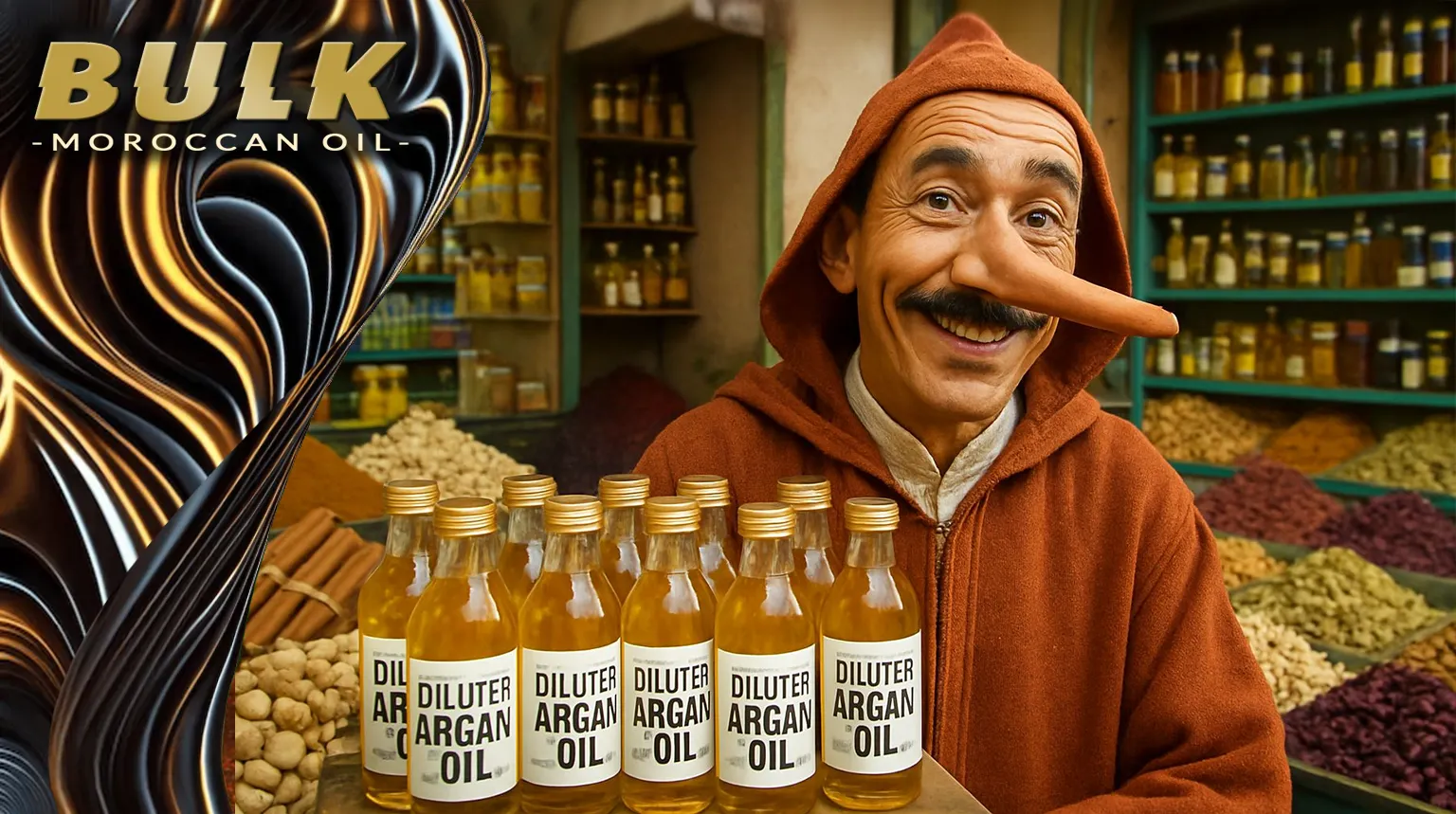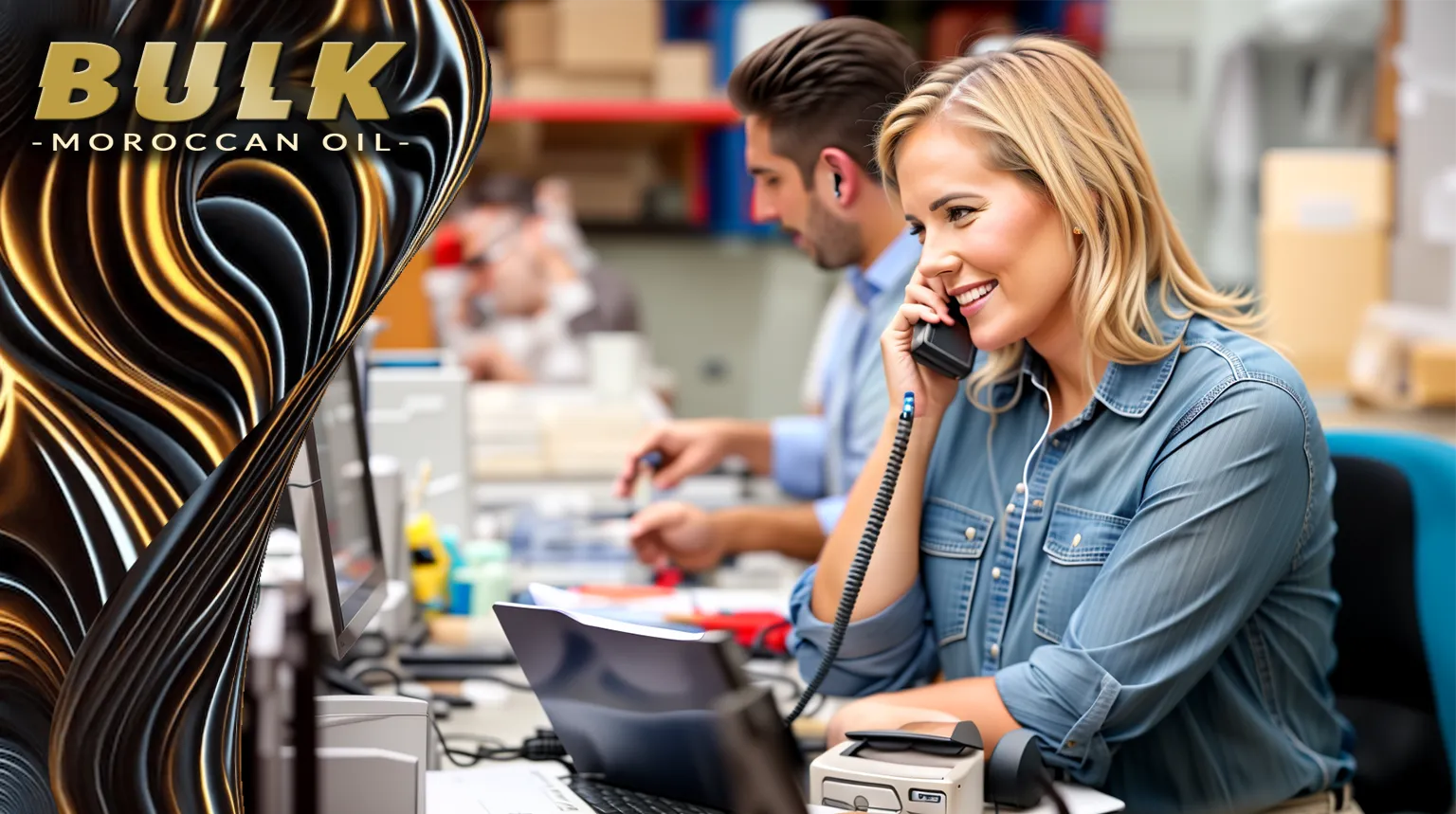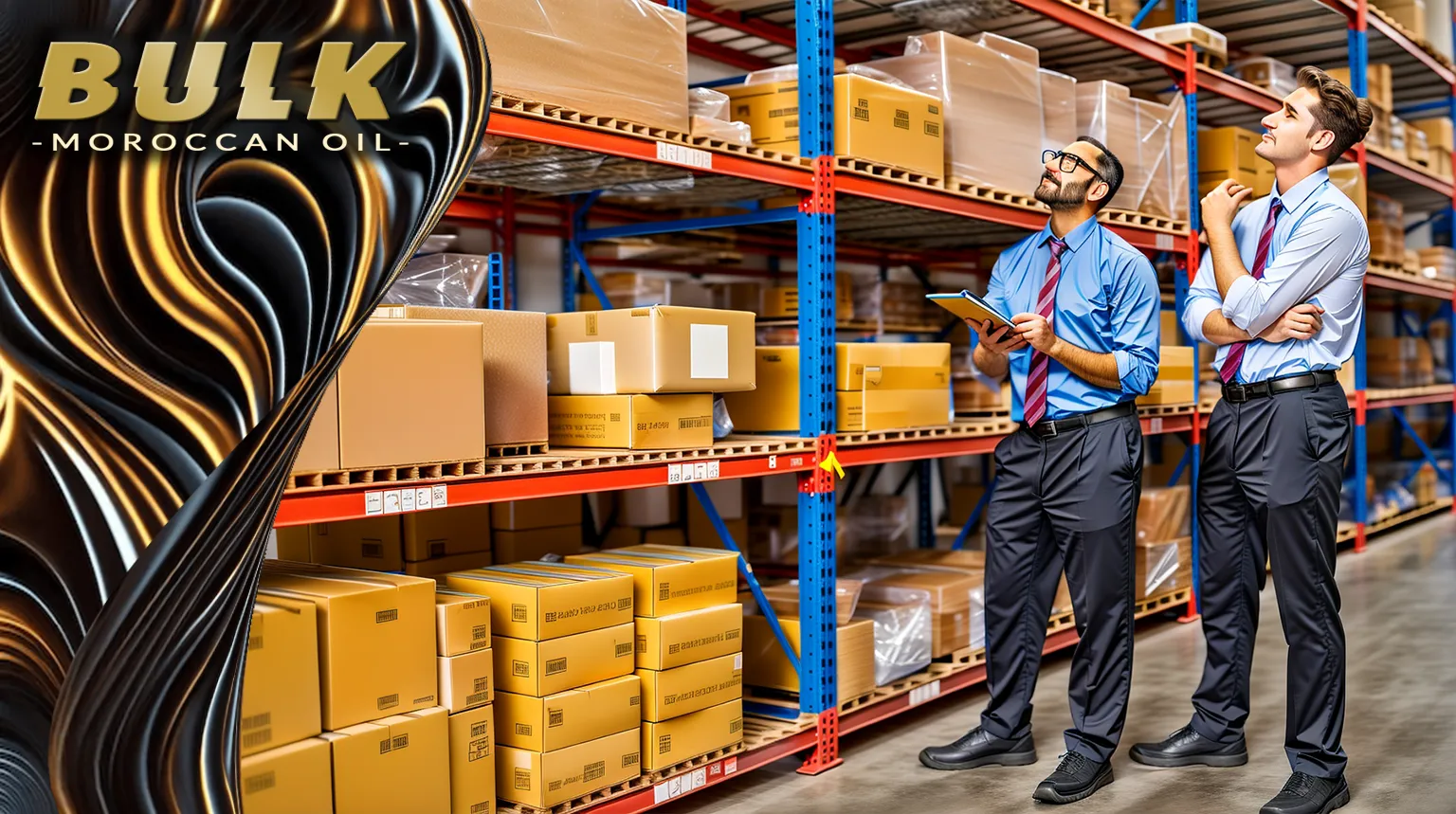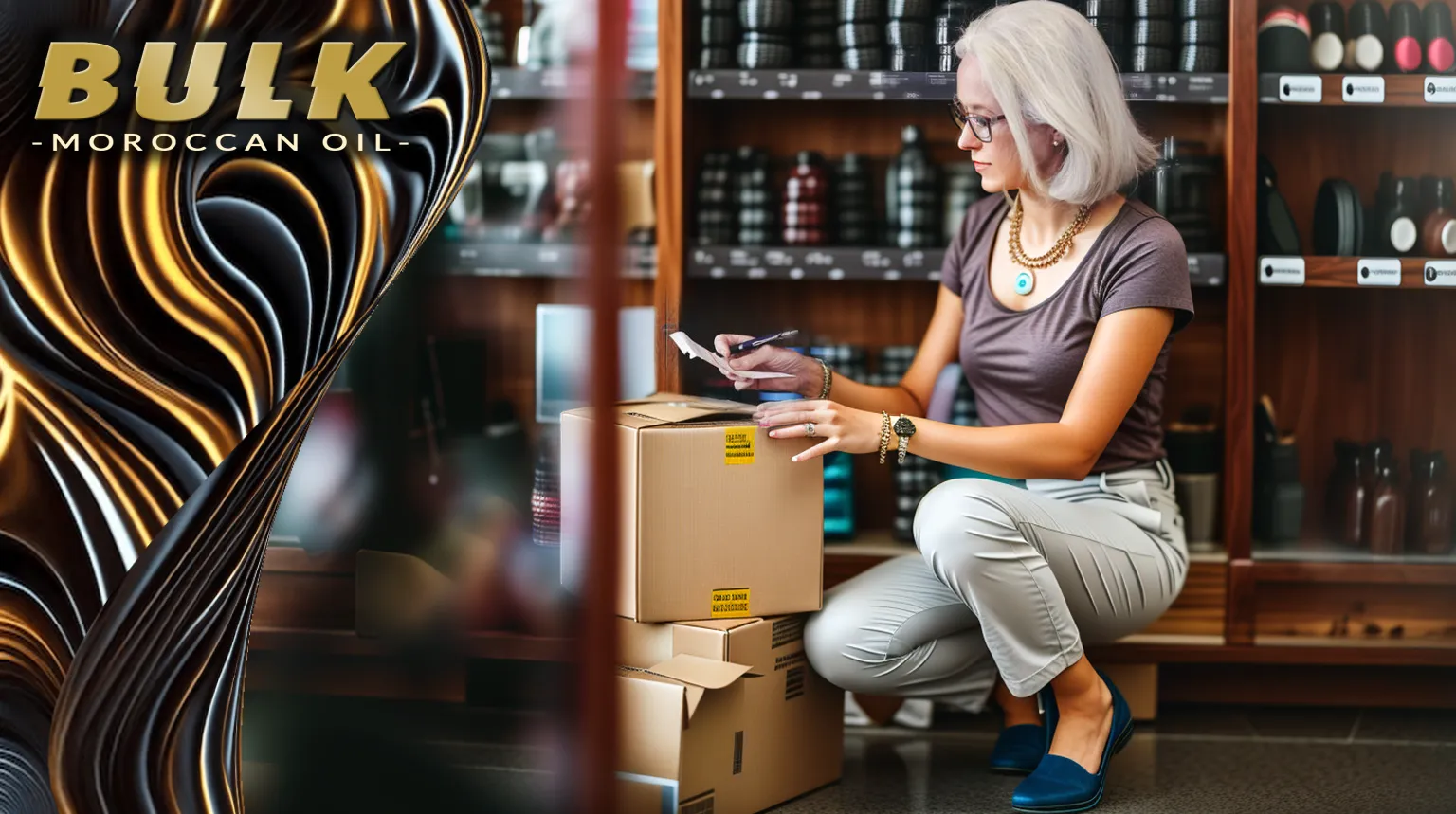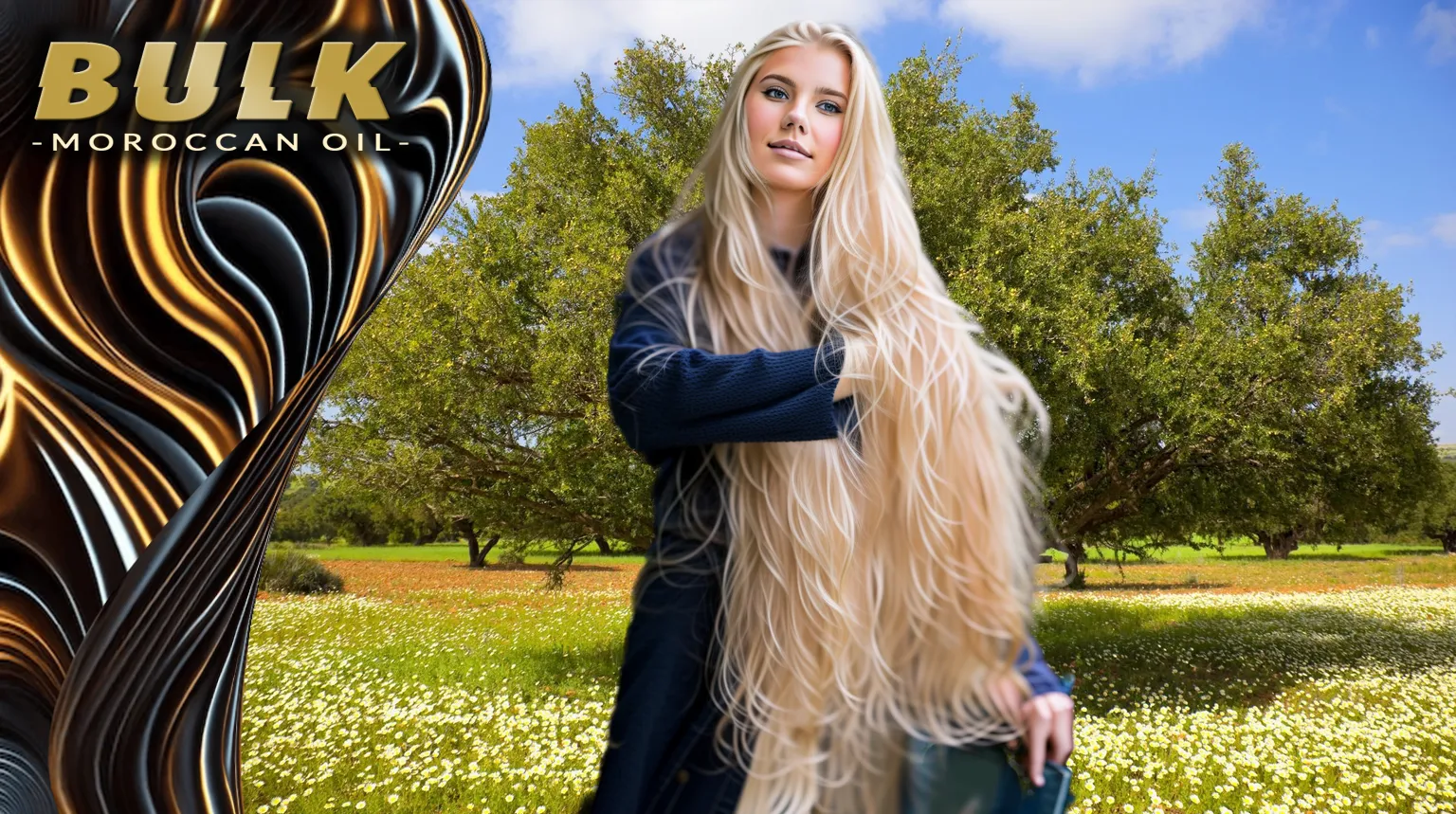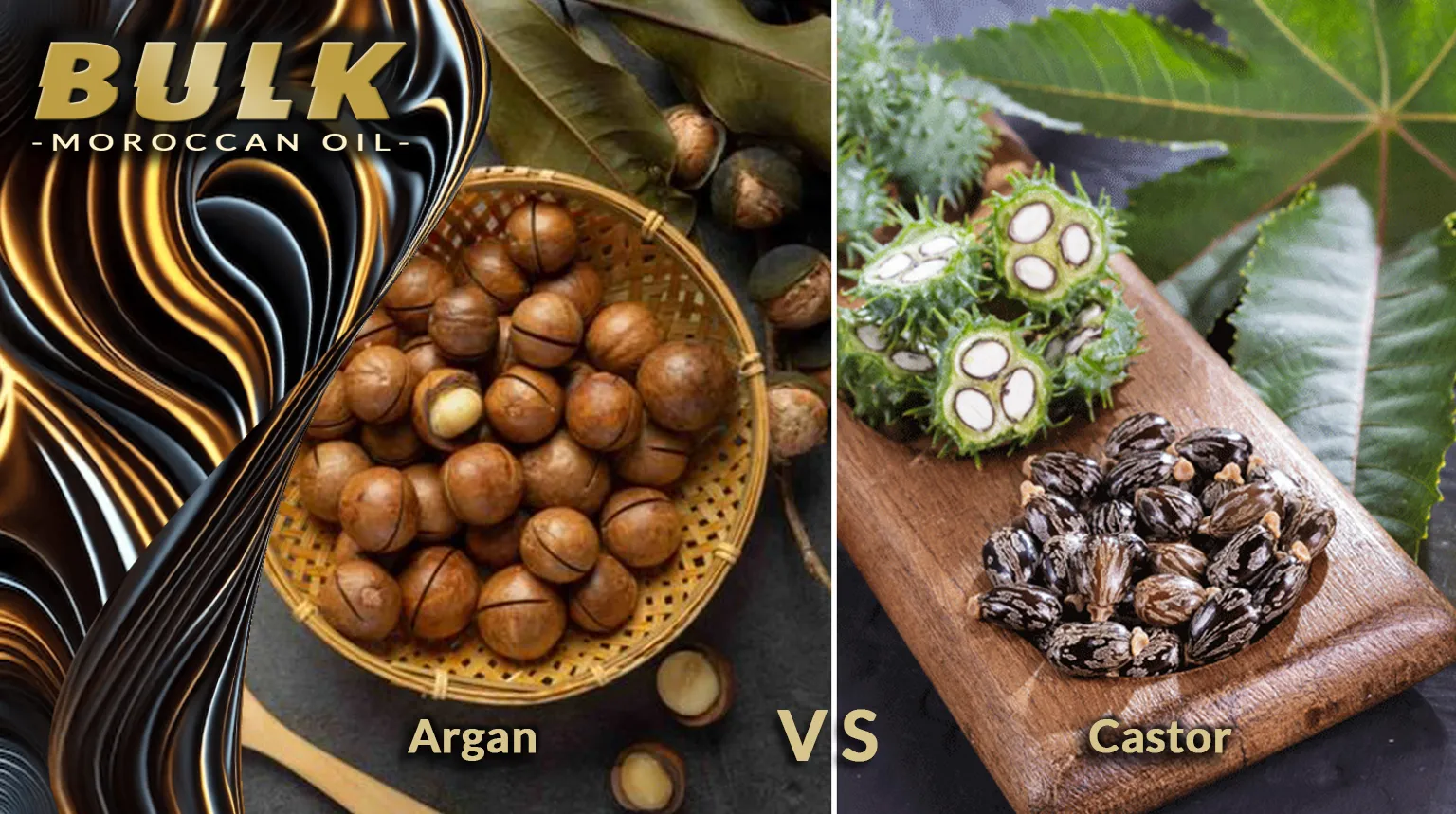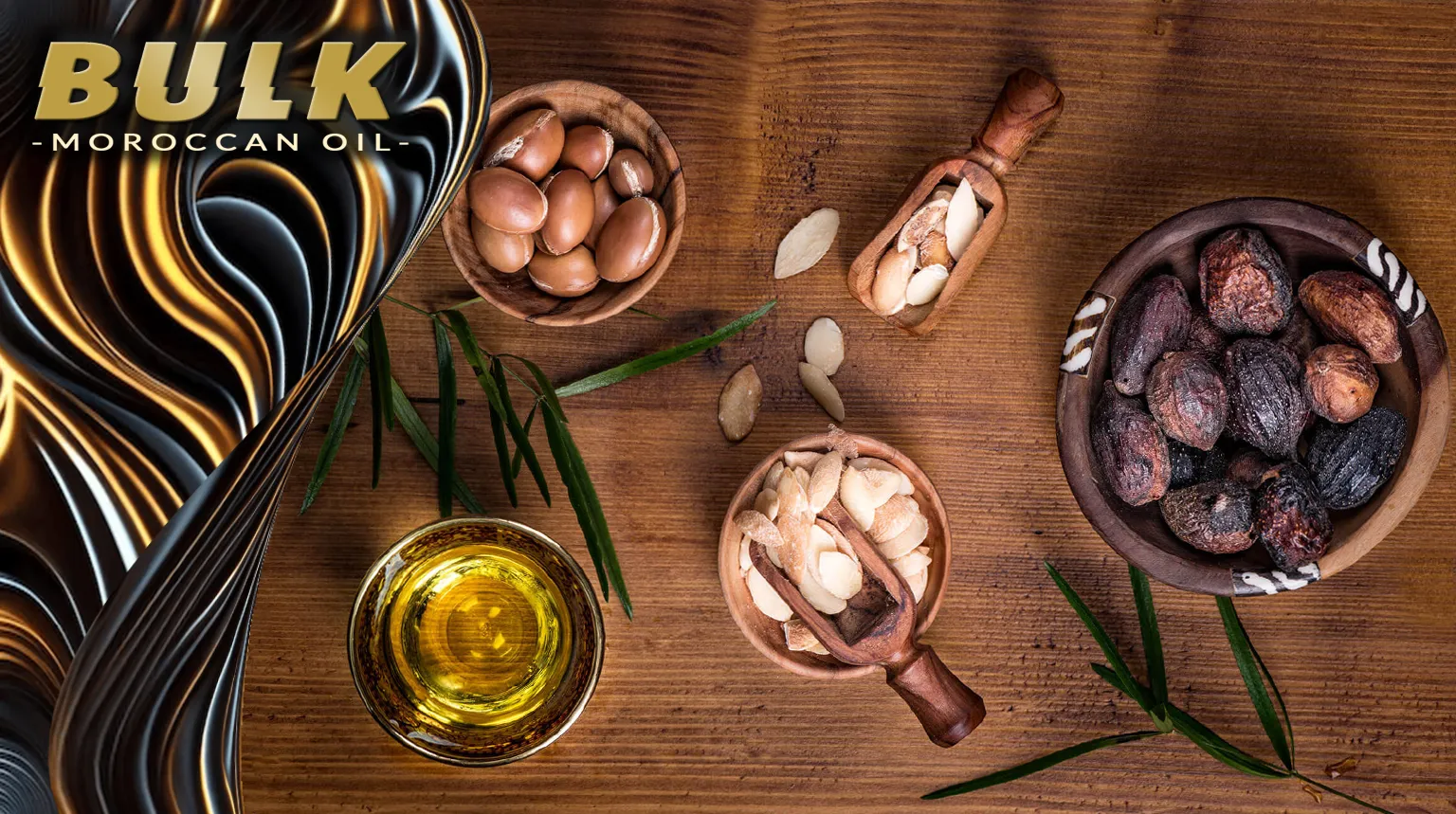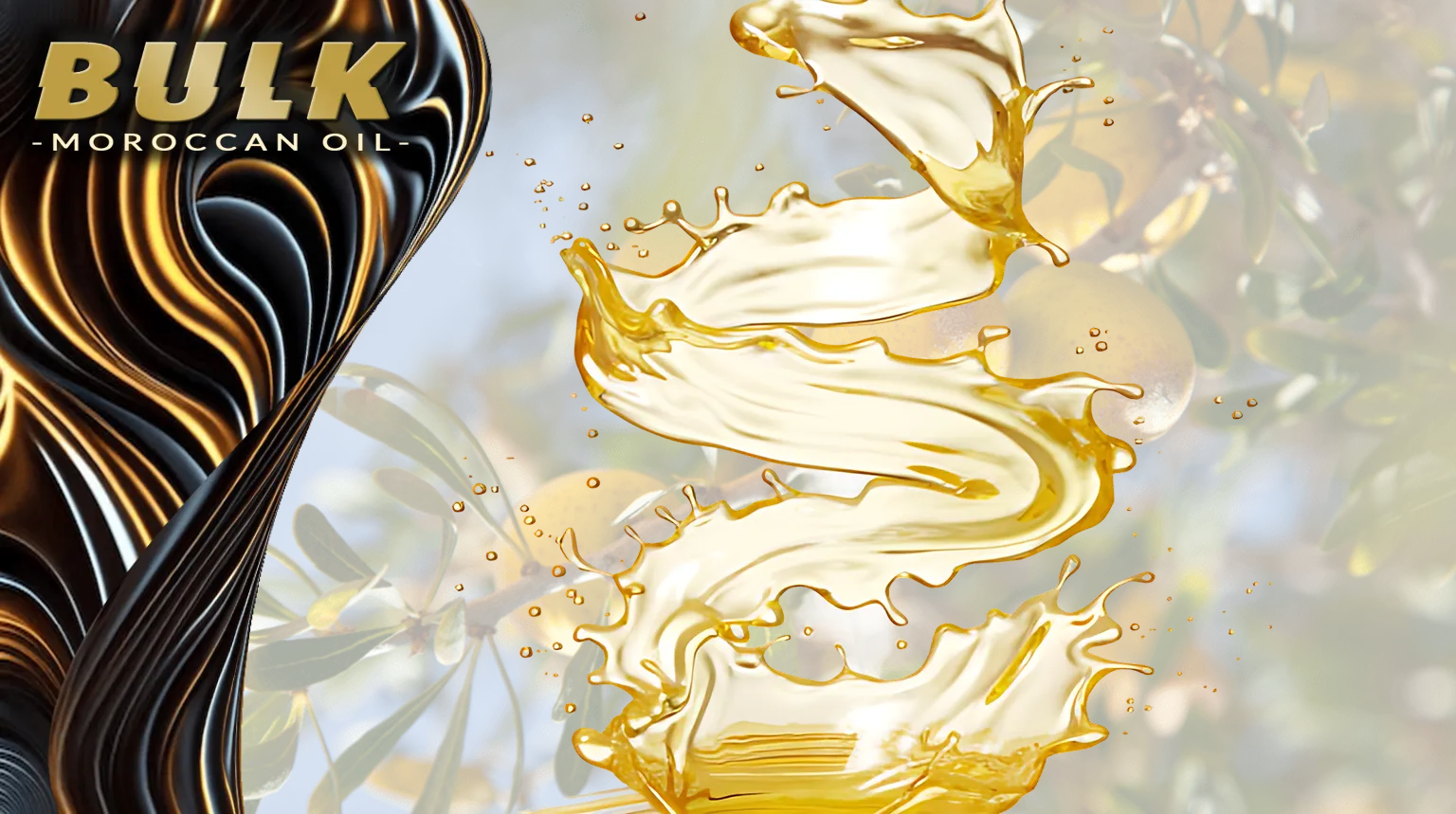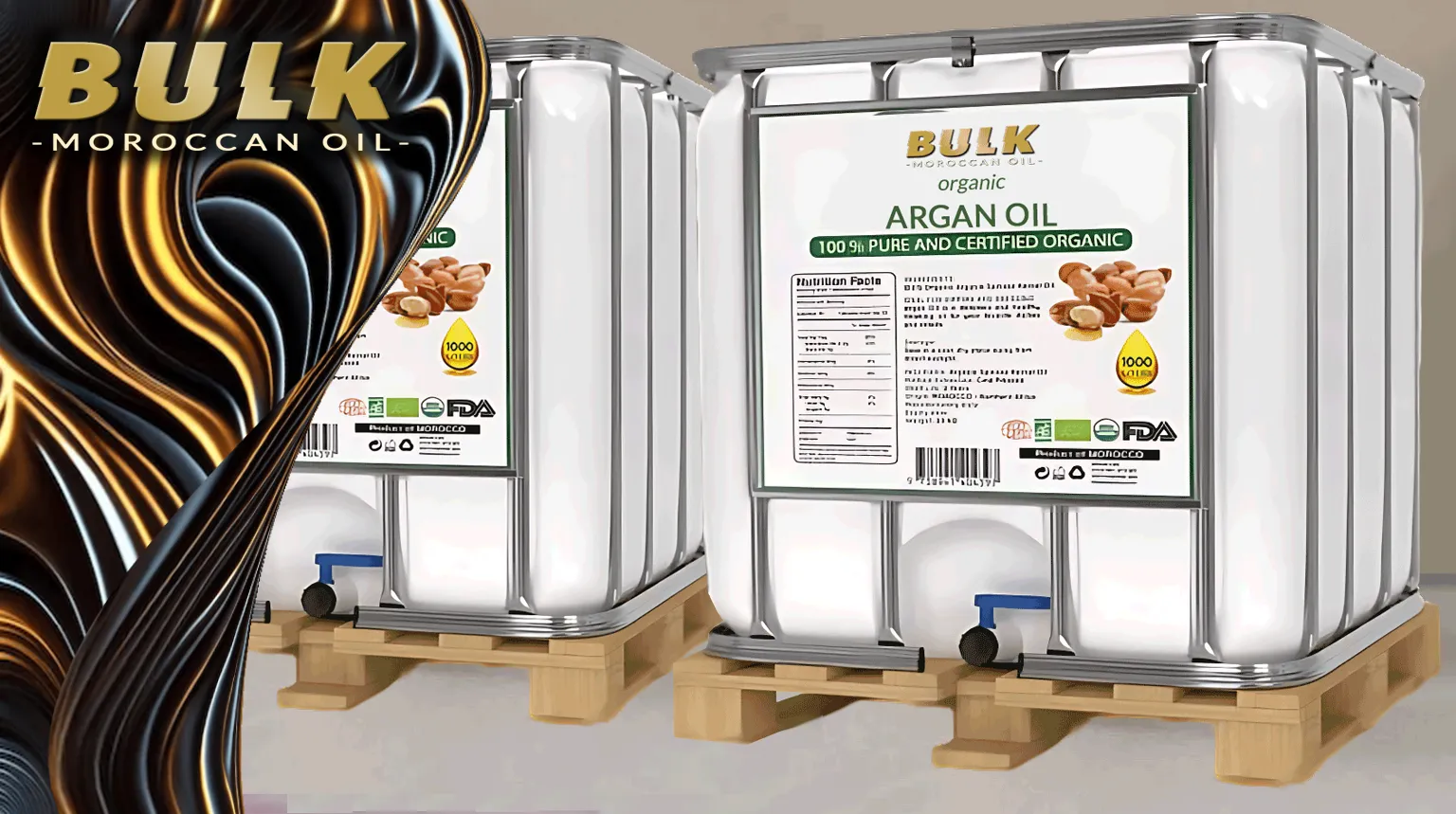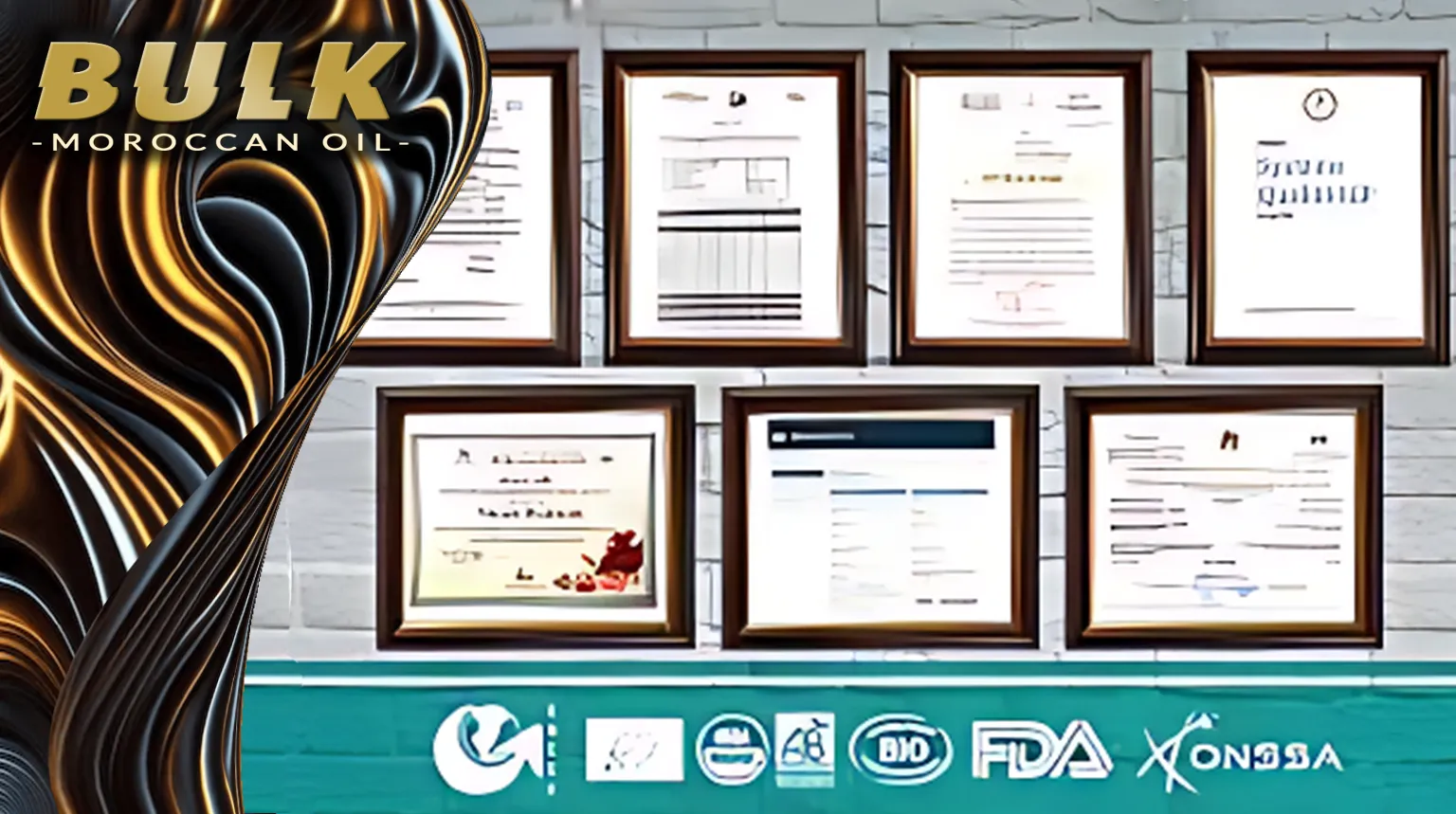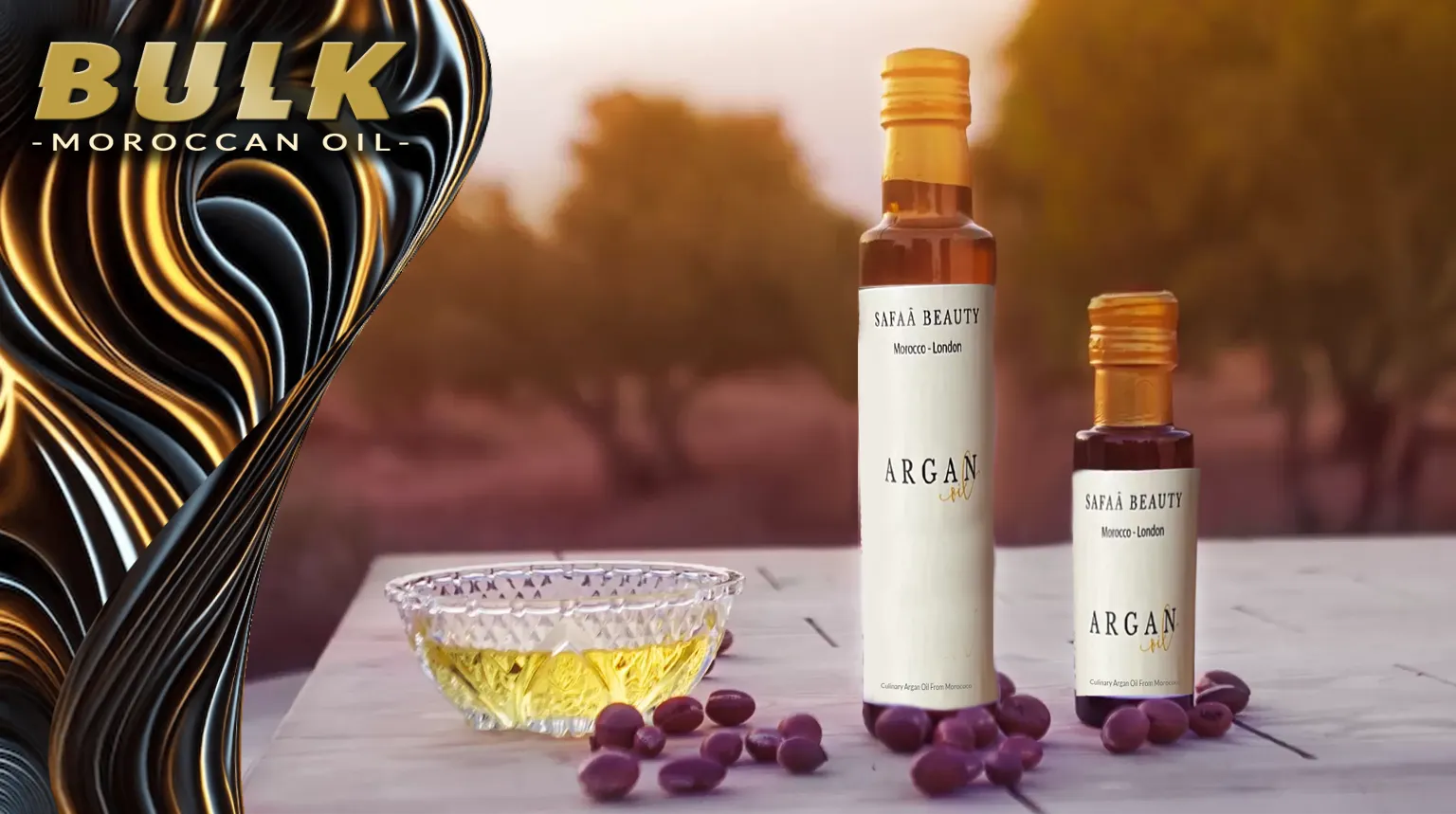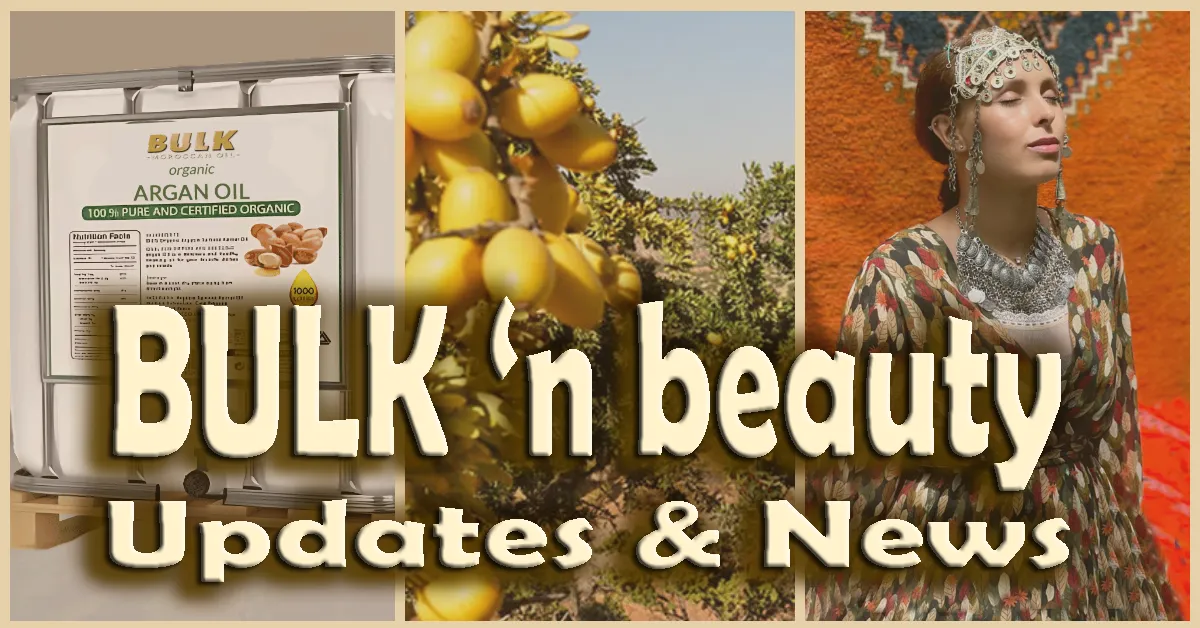What are the optimal storage conditions for maintaining the optimal chemical composition of Argan Oil?
Argan Oil: A Treasure for Health and Beauty Argan oil, also known as "liquid gold," is a remarkable and diverse vegetable oil obtained from the kernels of the Argan tree (Argania spinosa). It is celebrated for its exceptional chemical composition, making it a valuable addition to the world of skincare and haircare products. With its origins rooted in Morocco's Argan forest, this extraordinary oil is rich in essential fatty acids, antioxidants, and vitamins, providing numerous benefits to the two types of Argan oil; culinary and cosmetic Argan oil. In this article, we will delve deeper into the properties and benefits of Argan oil, exploring its potential as a high-quality oil extracted from the seeds of the Argan tree. Let us uncover the wonders of this extraordinary oil together! seed oil. oil prepared. Argan oil quality. properties of Argan. essential oil. extraction. Argan oil extraction method on Argan oil. Argan oil prepared. extraction method on Argan oil. Argan oil oxidation.
Content List:
1. Argan Oil Extraction: Preserving the Composition
2. Understanding the Composition of Argan Oil: The Nutritional Profile
3. Factors Affecting the Quality of Argan Oil
4. Maintaining Argan Oil's Nutritional Value: Storage and Handling Considerations
5. Quality Control of Argan Oil
6. Detecting Adulteration of Argan Oil
7. Enhancing the Shelf Life of Argan Oil
8. Argan Oil for Culinary and Cosmetic Use: Best Practices
9. Geographical Classification of Moroccan Argan Oils
10. Summary: Key Points to Remember
This blog is brought to you by BULK Moroccan Oil; Argan Oil Wholesale, your supplier for bulk Argan oil products.
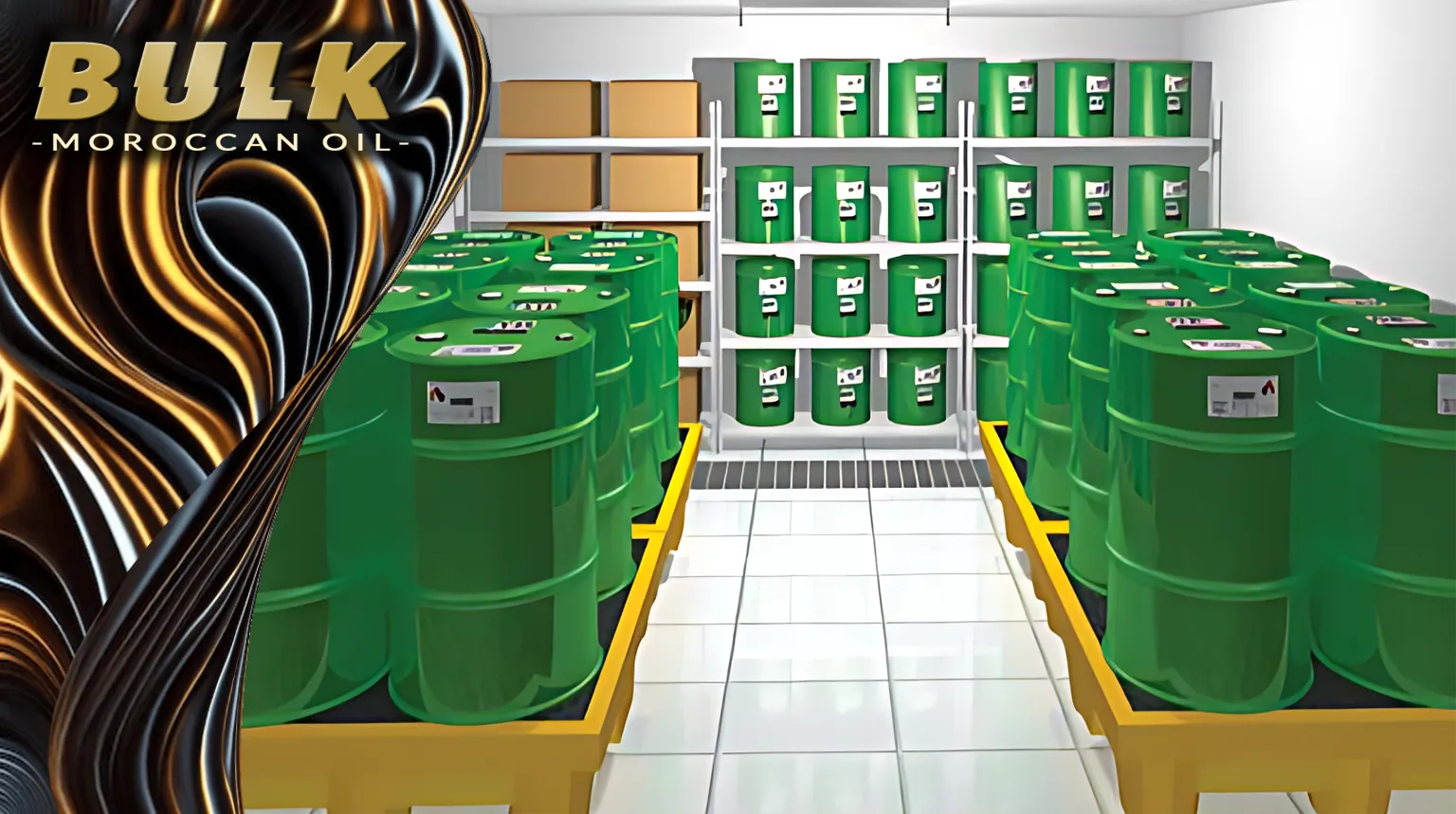
1. Argan Oil Extraction: Preserving the Composition
The quality and nutritional value of Argan oil begin with the extraction process of the Argan kernel. Traditional methods involve manually cracking the Argan nuts and grinding them into a paste. The paste of the Argan fruit is then mixed with water and kneaded to extract the oil. While this process has been used for centuries, modern methods involving mechanical presses are also employed to yield larger quantities of oil. After kneading, the paste is either pressed manually or using mechanical presses to extract the oil. This Argan oil composition can then be further refined and purified through various processes, such as filtering and centrifugation, to produce high-quality edible oil.
Modern mechanical presses can extract larger quantities of oil from the paste in a more efficient manner. These presses use pressure and friction to separate the oil from the paste, resulting in higher yields and faster processing times. Regardless of the extraction method used, it is important to preserve the composition and nutritional value of the Argan oil. The temperature at which the oil is extracted and processed plays a critical role in maintaining the quality of the oil. High temperatures can degrade the oil and diminish its nutritional value, so it is essential to use low-temperature extraction methods to preserve the natural benefits of the oil.
Additionally, the oil should be stored in dark, airtight containers to protect it from light and air exposure, which can cause oxidation and rancidity. Proper storage is crucial for maintaining the freshness and quality of the oil.
It is also important to ensure that the oil is not mixed with any additives or other oils, as this can alter its composition and diminish its purity.
By carefully controlling the extraction process, using low-temperature methods, and ensuring proper storage, the composition and nutritional value of Argan oil can be preserved, resulting in high-quality, pure, and beneficial oil for various culinary and cosmetic uses.
2. Understanding the Composition of Argan Oil: The Nutritional Profile
Argan oil's nutritional composition contributes to its health benefits. It contains a unique combination of fatty acids, including:
- Oleic acid: This monounsaturated omega-9 fatty acid is known for its anti-inflammatory properties and ability to improve heart health.
- Linoleic acid: Also known as omega-6 fatty acid, linoleic acid helps maintain the skin's natural barrier, reducing moisture loss and preventing dryness.
- Palmitic acid: This saturated fatty acid is essential for the skin's barrier function and helps maintain cell membranes' integrity.
- Stearic acid: Another saturated fatty acid, stearic acid has emollient properties, making it effective in moisturizing the skin.
In addition to these fatty acids, Argan oil is also rich in vitamin E, a group of powerful antioxidants that protect cells from damage caused by free radicals. Vitamin E also has anti-inflammatory effects and helps maintain healthy skin and hair. Overall, the nutritional profile of Argan oil makes it a valuable addition to your diet and skincare routine, offering a wide range of health benefits. ng oleic acid, linoleic acid, and palmitic acid. These fatty acids help maintain healthy cholesterol levels and promote cardiovascular health. Extra virgin Argan oil is rich in antioxidants, such as tocopherols and polyphenols, which protect the body against oxidative stress.
3. Factors Affecting the Quality of Argan Oil
Several factors can affect the quality of Argan oil, including the variety of Argan tree, the region it is grown in, and the extraction method used.
- The variety of Argan tree: There are two main varieties of Argan trees, the traditional Argan tree and the improved Argan tree. The traditional variety is known for producing higher quality oil due to its higher oil content and better flavor. The improved variety, on the other hand, produces a larger quantity of oil, but it may not be of the same quality as the traditional variety.
- The region of cultivation: The quality of Argan oil can also be influenced by the region in which the Argan trees are grown. The climate, soil, and altitude of the region can all affect the composition of the oil. Argan oil from the southwestern region of Morocco, where the Argan tree is native, is generally considered to be of higher quality than oil from other regions.
- Extraction method: The method used to extract the oil from the Argan nuts can also impact the quality of the oil. Traditional methods involve hand-cracking the nuts and then cold-pressing them to extract the oil. This method is believed to produce the highest quality oil, as it preserves the natural properties of the oil. However, some modern extraction methods involve using machines and high heat, which can degrade the oil and lower its quality.
Various factors influence the quality of Argan oil, and consumers should consider these factors when purchasing Argan oil to ensure they are getting a high-quality product. The fatty acid composition, tocopherol content, and overall stability of the oil can vary depending on these factors. It is important to choose high-quality Argan oil from reputable sources to ensure its nutritional value.
4. Maintaining Argan Oil's Nutritional Value: Storage and Handling Considerations
To preserve the nutritional composition of Argan oil, it is essential to follow proper storage and handling practices. Here are some key considerations:
- Storage Temperature:
- Argan oil should be stored in a cool, dry place away from direct sunlight and heat sources. Excessive heat can degrade the oil's nutritional properties, so it's important to avoid exposing it to high temperatures.
- Air Exposure:
- Argan oil should be stored in airtight containers to minimize its exposure to air. Oxygen can cause oxidation, which can lead to a reduction in the oil's nutritional value. Choose containers that have airtight seals to maintain the oil's freshness.
- Light Protection:
- Argan oil should be stored in bottles that are made of dark-colored glass, such as amber or blue. This helps to protect the oil from harmful UV rays that can degrade its nutritional content.
- Proper Handling:
- When using Argan oil, it's important to avoid introducing contaminants. Make sure to clean your hands thoroughly before handling the oil to prevent bacteria transfer. Additionally, use clean utensils to scoop out the desired amount of oil, minimizing the risk of contamination.
- - Avoiding Moisture:
- Moisture can also degrade the quality of Argan oil, so it's crucial to keep it away from water or sources of humidity. Ensure the container is tightly sealed after each use to prevent moisture from entering.
By following these storage and handling considerations, you can help preserve the nutritional composition of Argan oil and ensure its freshness for an extended period.
5. Quality Control of Argan Oil
To ensure the quality of Argan oil, various parameters are considered during quality control tests. These tests may include determining the acidity level, peroxide value, moisture content, and the presence of any contaminants.
- Acidity level: The acidity level of Argan oil is an important indicator of its quality. High levels of acidity may indicate that the oil has not been properly processed or has gone rancid.
- Peroxide value: The peroxide value test measures the rancidity of the oil. High peroxide values may indicate that the oil has been exposed to oxygen and has started to spoil.
- Moisture content: Argan oil should have low moisture content to prevent the growth of bacteria and fungi. Excessive moisture can lead to spoilage and a decrease in the oil's shelf life.
- Contaminants: Quality control tests also check for the presence of contaminants such as pesticides, heavy metals, and other impurities that may have been introduced during the production process.
In addition to these tests, sensory evaluations are also conducted to assess the color, odor, and taste of the Argan products. These tests are important as they provide an overall assessment of the oil's quality and help to ensure that it meets the required standards.
It is important for producers to conduct these quality control tests regularly to ensure that their Argan oil meets the required quality standards and is safe for consumption and use. Additionally, these tests are crucial for maintaining the reputation and trust of consumers in the product.
6. Detecting Adulteration of Argan Oil
Adulteration of Argan oil is a concern in the market. Several methods can be employed to detect adulteration, including gas chromatography, nuclear magnetic resonance spectroscopy, and fatty acid profiling. Gas chromatography can be used to analyze the fatty acid composition of the oil, while nuclear magnetic resonance spectroscopy can detect any foreign substances or adulterants present. Fatty acid profiling can also be used to compare the profile of the oil to known standards to identify any discrepancies.
In addition to these laboratory-based methods, sensory analysis can also be used to detect adulteration. The aroma and flavor of pure Argan oil can be compared to known standards to identify any differences that may indicate adulteration.
It is important for consumers to be aware of these detection methods and to purchase Argan oil from reputable sources that provide documentation of purity and quality testing. This can help ensure that they are getting a genuine and high-quality product.
7. Enhancing the Shelf Life of Argan Oil
While Argan oil has a relatively long shelf life compared to other oils, it can still undergo oxidation over time. To enhance its shelf life, manufacturers often add natural antioxidants, such as rosemary extract or vitamin E, to the oil. These antioxidants help stabilize the oil and delay the onset of rancidity.
Another way to enhance the shelf life of Argan oil is by storing it properly. The oil should be stored in a cool, dark place away from direct sunlight and heat sources. It is also important to keep the oil tightly sealed when not in use to prevent exposure to air, which can accelerate oxidation.
Using dark-colored or opaque packaging can also help protect the oil from light exposure, which can lead to oxidation. Additionally, using air-tight packaging, such as bottles with airtight caps or pumps, can help minimize air exposure and prolong the oil's shelf life.
Regularly checking the oil for any signs of rancidity, such as a rancid odor or changes in color and consistency, is also important in ensuring its quality. If any of these signs are present, it is best to discard the oil to prevent any negative effects on the skin or hair.
By taking these measures, the shelf life of Argan oil can be extended, ensuring that it retains its beneficial properties for a longer period of time.
8. Argan Oil for Culinary and Cosmetic Use: Best Practices
The storage and handling considerations for Argan oil vary depending on its intended use. For culinary purposes, it is crucial to choose edible Argan oil that meets food-grade standards. When using Argan oil in cooking, it is recommended to use it as a finishing oil rather than for high-heat cooking, as high temperatures can degrade its nutritional properties. When it comes to cosmetic use, it is important to store Argan oil in a cool, dark place, as exposure to light and heat can cause it to go rancid. Additionally, always make sure to use clean hands and tools when handling Argan oil to prevent contamination.
For both culinary and cosmetic use, it is best to purchase Argan oil from reputable sources to ensure its purity and quality of edible Argan oil. Look for labels that indicate it is 100% pure or organic and has been cold-pressed, as this method helps to retain the oil's beneficial properties.
When using Argan oil for cosmetic purposes, it is best to perform a patch test first to check for any allergic reactions. Apply a small amount of oil to a small area of skin and wait for 24 hours to see if there is any adverse reaction before using it more extensively.
Whether using Argan oil for culinary or cosmetic purposes, it is important to handle and store it properly to maintain its quality and effectiveness. By following these best practices, you can make the most of this versatile and beneficial oil.
In the cosmetic industry, Argan oil is used in skincare products, hair conditioners, and other beauty treatments. To maintain its efficacy, cosmetic Argan oil should be stored in a cool, dark place and used within its recommended shelf life.
9. Geographical Classification of Moroccan Argan Oils
Moroccan Argan oil has gained worldwide recognition for its superior quality. Within Morocco, Argan oil is classified into different geographical regions, such as Aït Souab, Tidzi, or Tamanar. Each region produces Argan oil with unique characteristics resulting from variations in soil composition, climate, and cultivation practices. Understanding these geographical differences can help consumers make informed choices based on their preferences. For example, Argan oil from Aït Souab is known for its nutty aroma and deep golden color, whereas Tidzi Argan oil is prized for its light and mild flavor. Tamanar Argan oil, on the other hand, is often described as having a rich, robust flavor. Each region also has its own traditional methods of extracting Argan oil, which can further influence its aroma, taste, and overall quality.
In addition to geographical classification, Moroccan Argan oil is also categorized by its production method. Traditional Argan oil uses age-old techniques, such as hand-cracking the Argan nuts and pressing the oil manually. This method is time-consuming, but it preserves the oil's natural nutrients and imparts a rich, authentic flavor. On the other hand, mechanically extracted Argan oil is produced using modern machinery, resulting in a lighter, more neutral-tasting oil.
Ultimately, Moroccan Argan oil's geographical classification and production method play a significant role in determining its unique characteristics and quality. By understanding these factors, consumers can select the Argan oil that best suits their preferences, whether for culinary use or skin care.
10. Summary:
Discover the Versatility of Argan Oil In conclusion, Argan oil is a precious gift from nature, offering a wealth of benefits due to its unique chemical composition. This vegetable oil, extracted from the seeds of the Argan tree, has captured the attention of both the culinary and cosmetic industries. From its ability to enhance the kitchen dishes' flavors to its remarkable properties for rejuvenating and nourishing the skin and hair, Argan oil proves to be a versatile and valuable ingredient. By understanding the importance of oil quality, storage methods, and proper handling, we can fully appreciate the exceptional qualities that Argan oil brings to our lives. Embrace the power of Argan oil and unlock a world of possibilities for your health and beauty needs.
Key Points to Remember
- Store Argan oil in a cool, dry place away from heat and sunlight.
- Store in airtight, dark-colored glass bottles to minimize air and light exposure.
- Handle the oil with clean hands and utensils to prevent contamination.
- Avoid moisture by tightly sealing the container after each use.
- Adulteration of Argan oil can be detected through various tests.
- Natural antioxidants can enhance the shelf life of Argan oil.
- Consider different storage and handling practices for culinary and cosmetic Argan oil.
- Moroccan Argan oil varies in quality based on geographical regions.
In conclusion, preserving the nutritional composition of Argan oil requires proper storage and handling practices. By following these recommendations, you can ensure the freshness and quality of Argan oil, allowing you to enjoy its health benefits and culinary uses fully.
Hashtags:
#PreserveArganOil #NutritionalConservation #ProtectingArganOil #QualityPreservation #SustainableBeauty #NaturalSkincare #HealthyChoices #PreserveHealth #EnvironmentallyFriendly #SustainableLiving #EcoFriendlyBeauty #HealthWellness #ConservationMatters #NaturalIngredients #OrganicLifestyle
Referrals:
- "Argan Oil: Chemical Composition, Extraction Process, and Quality Control" - PMC
- "Oxidative stability of edible Argan oil: A two-year study" - ScienceDirect
- "Quality Control and Authentication of Argan Oils: Application of Advanced Analytical Techniques" - PMC
- No title available - NHR Organic Oils
- "Everything You Need To Know About Argan Oil" - Verywell Health
- No title available - Sage Journals
- "Argan Oil: Chemical Composition, Extraction Process, and Quality Control" - ResearchGate
- "simply Argan oil" - The RERS Group
- "Effects of Roasting Temperature and Time on the Chemical Composition of Argan Oil" - Hindawi
- "The Argan oil project: going from utopia to reality in 20 years" - OCL - Oilseeds and fats, Crops and Lipids
Frequently Asked Questions ( FAQ )
Q: What are the optimal storage conditions for maintaining the optimal chemical composition of Argan Oil?
A: To maintain the optimal chemical composition of Argan Oil, it is recommended to store it in a cool, dark place away from direct sunlight and heat sources. Additionally, tightly sealing the container to prevent exposure to air will help preserve the quality of the oil.
Q: How does the quality of the oil sample affect the properties of Argan Oil?
A: The quality of the oil sample used in the extraction process directly impacts the physico-chemical characteristics and composition of Argan Oil. Using high-quality Argan oil samples results in a superior final product with better taste and nutritional value.
Q: What methods can be used to analyze the chemical composition and oxidative stability of Argan Oil?
A: Various methods, such as chromatography and spectroscopy, can be employed to analyze the chemical composition and oxidative stability of Argan Oil. These techniques help in determining the fatty acids present and assessing the oil's quality and shelf life.
Q: How can the detection of Argan Oil adulteration be carried out?
A: The detection and quantification of Argan Oil adulteration can be done using analytical techniques like chromatography and DNA testing. These methods help identify any vegetable oil adulterants in the Argan Oil, ensuring purity.
Q: What are the differences between roasted and unroasted Argan Oil in terms of quality and composition?
A: Roasted Argan Oil tends to have a more intense flavor profile due to the roasting process, while unroasted Argan Oil maintains a more delicate taste. The composition of roasted and unroasted oils can vary in terms of antioxidants and fatty acid content.
Q: How is Argan Oil prepared from the Argan tree's fruit to ensure high quality?
A: Argan Oil is prepared by cold-pressing the kernels that are extracted from the fruit of the Argan tree. This method helps retain the oil's natural properties and ensures a high-quality, pure product.
Q: What characteristics make Argan Oil the best choice for culinary and cosmetic applications?
A: Argan Oil is known for its high levels of unsaturated fatty acids, antioxidants, and vitamins, making it a beneficial choice for both culinary and cosmetic purposes. Its versatility, light texture, and nutty flavor contribute to its popularity in various applications.
Q: What are the optimal storage conditions for maintaining the optimal chemical composition of Argan Oil?
A: To preserve the chemical composition of Argan Oil, storing it in a cool, dark place away from direct sunlight and heat is recommended. Also, make sure to keep it tightly sealed to prevent oxidation.
Q: How does the composition of virgin Argan Oil affect its quality?
A: The composition of virgin Argan Oil, particularly its fatty acids and tocopherol content, is key in determining its quality. Higher levels of these components are usually associated with better quality.
Q: What factors contribute to the quality of Argan Oil?
A: The quality of Argan Oil is influenced by factors such as the extraction method, purity of the oil, physico-chemical characteristics, and the type of Argan fruit used.
Q: How can one distinguish between different types of Argan Oil?
A: Different types of Argan Oil can be distinguished based on their physico-chemical characteristics, composition, and the method through which they are extracted.
Q: What are the main characteristics of Argan Oil obtained through cold pressing?
A: Argan Oil obtained through cold pressing retains more of its natural nutrients and is of higher quality than oil obtained through other methods.
Q: How can the purity of edible Argan Oil be ensured?
A: The purity of edible Argan Oil can be ensured by sourcing it from reputable sources, checking for certifications, and looking for a clear indication of its quality on the packaging.

